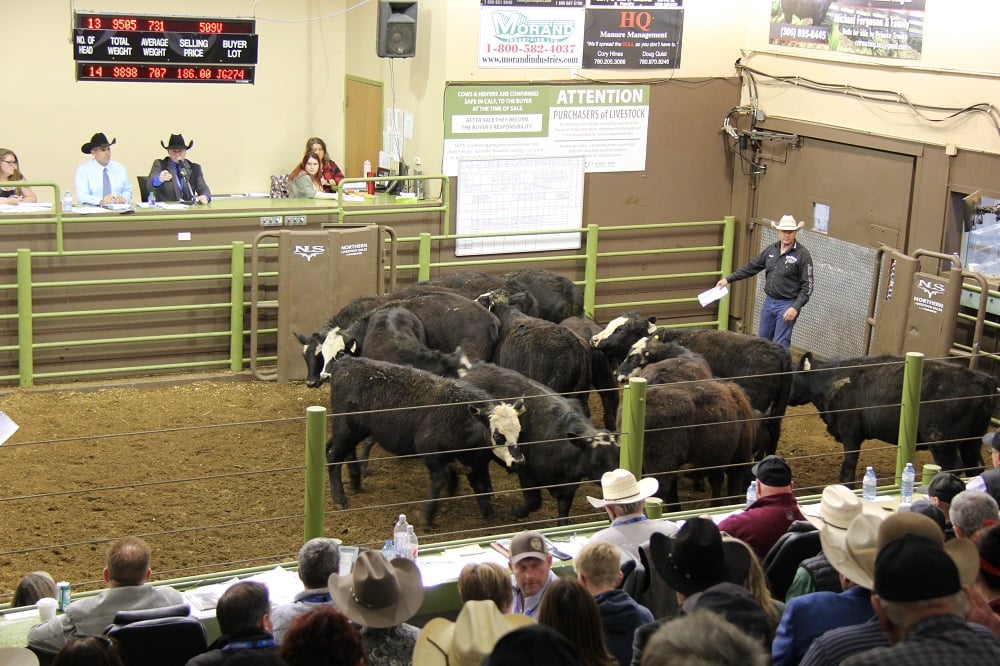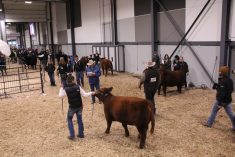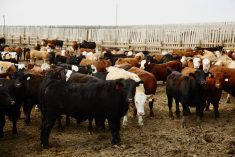Feeder cattle prices in Western Canada have been percolating higher throughout the fall and I’ve received many inquiries in regards to price expectations for the spring. USDA and Statistics Canada have reported lower calf crops over the past five years but it took until last March before prices started to reflect the tighter supply equation.
We have seen how sensitive the feeder market is to overall beef demand and feedlot profitability. Higher energy prices tend to increase feed costs due to ethanol and biofuel demand; however, we have realized over the past year that cattle producers actually fare better when energy prices are higher. Equity prices and energy markets are highly correlated and a stronger stock market also reflects larger disposable income for the average consumer. Disposable income is the largest factor influencing beef demand.
Read Also

Cattle Market Summary
Break-evens, cow and calf prices, plus market summaries courtesy of Canfax and Beef Farmers of Ontario. Cost of Production May…
So when we start looking at the factors influencing the price structure for the first half of 2011 we have to consider we are moving into one of the most profitable economic periods of the U.S. business cycle at a time when cattle inventories are historically tight.
Despite bred cow prices increasing 150 per cent over 2009, there appears to be limited expansion. The Canadian cattle herd is now at levels where domestic feedlots can absorb the Canadian calf crop and then some.
U.S. cow slaughter continues to run above year-ago levels and heifers are making up a larger portion of the slaughter mix. Therefore, we are not seeing any sign of herd expansion. We will likely see smaller feeder cattle inventories on the January 1 reports from the USDA and Canada.
Another factor to consider is that feeder cattle prices in Canada and the U.S. have been trading near historical highs. If we look at past history, the U.S. cow-calf producer needs to experience one full year of high prices before expansion occurs on a widespread scale. Heifer retention may start later in the summer, further tightening feeder cattle availability.
North American beef demand will improve in 2011 as disposable income increases for the average consumer. Away-from-home food expenditures have steadily increased over the past six months. This trend will continue with increasing equity values and improving consumer confidence. At home food spending will also rise as unemployment declines. We should start to see stronger retail prices for middle and higher-end meats which bodes well for carcass value.
Offshore beef exports are now higher than pre-recession levels as Southeast Asian consumption comes back on stream.
Feed costs are one blemish on this otherwise optimistic picture. Canadian barley supplies will be historically tight at the end of the 2010-11 crop year due to lower domestic production and stronger export demand. At the same time, the U.S. corn carryout has potential to drop under 800 million bushels and the market needs to encourage U.S. acreage in 2011. Russia continues to experience above normal temperatures while the U.S. Hard Red Winter wheat region is also very dry. Southern Brazil and central Argentina have also received below-normal precipitation. The world is now in a situation where we cannot afford any crop problems or the feed grains complex could move sharply higher in March-April. There is potential for barley prices to rally $30 to $40 from current levels over the next six months and that may erode feedlot profitability and temper the upside in the feeder market.
The function of the feeder market is to encourage expansion. The old historical highs are no longer sufficient to encourage heifer retention. Therefore, we could see feeder cattle prices make fresh highs in the spring and summer of 2011. Smaller calf crops and lower feedlot placements will cause U.S. beef production to be down sharply in March through June.
To sum up, lower beef supplies along with stronger demand will result in higher wholesale beef values and historically high fed cattle prices. This environment should favour stronger prices for feeder cattle; however, the feed grains could become explosive, tempering the upside.
GeraldKlassenisacommoditymarket analystinWinnipegandmaintainsan interestinthefamilyfeedlotinsouthern Alberta.Hewritesanin-depthbiweekly commentarycalledCanadianFeedlotand CattleMarketAnalysisforcattleproducers inWesternCanada.Hecanbereachedby emailat [email protected] or204-287-8268 forquestionsorcomments.
Thematerialcontainedhereinisfor informationpurposesonlyandisnot tobeconstruedasanofferforthesale orpurchaseofsecurities,optionsand/ orfuturesorfuturesoptionscontracts. Whiletheinformationinthispublication cannotbeguaranteed,itwasobtained fromsourcesbelievedtobereliable. Theriskoflossinfuturestradingcan besubstantial.Thearticleisanopinion onlyandmaynotbeaccurateabout marketdirectioninthefuture.Donot usethisinformationtomakebuyingor sellingdecision.Thisoutlookmaybe wrongandcouldcauseadversefinancial consequencesifdecisionsarebasedon thisinformation.
———
We are moving into one of the most profitable economic periods of the U.S. business cycle at a time when cattle inventories are historically tight














